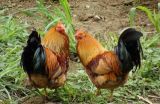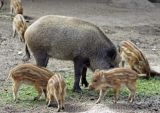山西种植业养殖业对当地生态环境的影响如何?

Answer:
Positive Impacts:
- Soil conservation: The practice of crop rotation and mulching helps to retain soil moisture, reduce erosion, and improve soil fertility.
- Water quality improvement: By reducing chemical runoff and improving water filtration, agricultural activities can help to protect water quality.
- Biodiversity enhancement: Farmers can incorporate beneficial insects and pollinators into their fields, supporting local biodiversity.
- Carbon sequestration: Agricultural practices, such as cover cropping and manure application, can help to absorb and store carbon dioxide from the atmosphere.
Negative Impacts:
- Habitat loss and fragmentation: Intensive farming operations, such as monoculture and large-scale irrigation, can fragment habitats and reduce biodiversity.
- Pollution: Agricultural runoff and fertilizers can pollute water bodies and soil, harming aquatic life and ecosystems.
- Greenhouse gas emissions: Livestock production, including cattle and sheep, contribute to greenhouse gas emissions, which are a major contributor to climate change.
- Chemical use: The use of pesticides and fertilizers can lead to soil and water contamination, as well as harm wildlife.
Overall Impact:
The impact of agricultural activities on the local ecosystem is complex and depends on factors such as the type of farming practiced, the management practices employed, and the surrounding environment. In general, sustainable agricultural practices that prioritize soil conservation, water quality, and biodiversity can have a positive impact. However, unsustainable practices can have negative consequences for the environment.
Additional Considerations:
- The impact of agricultural activities on the local ecosystem can vary depending on the local climate, soil type, and agricultural practices.
- The long-term effects of climate change on agriculture and the environment are also important factors to consider.
- There is a need for ongoing monitoring and research to assess the impacts of agricultural activities on the local ecosystem.





































































